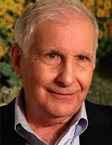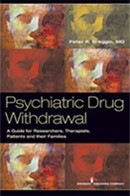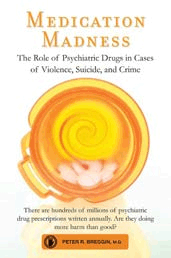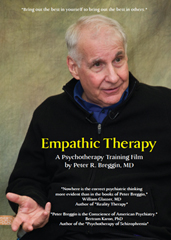School calls child services on parents who take child off of Ritalin
(Reprinted with permission of the Times Union of Albany, New York)
Ritalin use splits parents, school
By RICK KARLIN , Staff writer
Times Union, Albany, NY
Sunday, May 7, 2000
Berne — District marks parents as alleged child abusers for wanting to take their 7-year-old son off the medication
Like thousands of children, 7-year-old Kyle Carroll takes Ritalin for a diagnosis of attention deficit/hyperactivity disorder, or ADHD. And like thousands of parents, Michael and Jill Carroll worry about the drug’s side effects, including sleeplessness and loss of appetite. But they keep their child on the medication, in part because they fear child welfare workers will take him away if they don’t.
Earlier this year, administrators from the Berne-Knox-Westerlo school district called Albany County Child Protective Services, alleging child abuse when the Carrolls said they wanted to take Kyle off the drug. As a result, the Carrolls are now on a statewide list of alleged child abusers, and they have been thrust into an Orwellian family court battle to clear their name and to ensure their child isn’t removed from their home. “It’s beyond the point of whether he should be on it. Now it’s the point of them telling us what we’re going to do,” said Michael Carroll. “They’re telling me how to raise my child.”
The Carroll’s dilemma is not unique. While there are no reliable statistics on the phenomenon, observers say public schools are increasingly accusing parents of child abuse and neglect if they balk at giving their children medication such as Ritalin, a stimulant being prescribed to more and more students. According to a recent report from the American Academy of Pediatrics, as many as 3.8 million school
children, mostly boys, have ADHD. The disorder is characterized by a short attention span, jumpiness and impulsive behavior. But many cases are misdiagnosed, the study found. Additionally, at least a million children take Ritalin and the use of the drug has risen many times more during the past few years. Along with that increase, schools are using some heavy-handed tactics on parents who may balk at the medication.
“The schools are now using child protective services to enforce their own desires and their own policies,” said David Lansner, a New York City lawyer who has seen cases similar to the Carrolls’. “The parents’ authority is being undermined when people have to do what some public official wants,” Lansner added. “This thing is so scary,” remarked Patricia Weathers, of Millbrook, a suburb of Poughkeepsie. Officials at the Millbrook school district called police and child protective services when she took her 9-year-old son, Michael Mozer, off medications earlier this year. She said a drug cocktail including Ritalin, the anti-depressant Paxil and Dexedrine, a stimulant like Ritalin, caused her boy to hallucinate. “My son was a guinea pig,” said Weathers, who now sends the child to a private school.
“This is relatively new but it’s happening,” said Peter Breggin, a Bethesda, Md., psychiatrist, of the school districts’ legal tactics. Breggin is an author who opposes the use of Ritalin.
Child protective workers with the Albany County Department of Social Services didn’t return phone calls
seeking comment on the subject. And county spokeswoman Monica Mahaffey said social workers and others would not publicly discuss such matters. “We’re just absolutely not going to comment because of confidentiality,” she said.
Likewise with officials at the Berne-Knox-Westerlo school district.
“We feel we are unable to give our side of the story due to confidentiality,” said district superintendent Steven Schrade.
“It’s a point of view that they have, and we have our point of view. We feel our side is based on facts,” said Schrade, who added, “There’s more to it than I can tell you.”
Schrade noted that schools do not prescribe medication such as Ritalin. Any drug prescription has to come from a physician, although school nurses can administer the drug and school officials can recommend it.
Kyle Carroll started taking Ritalin last year, after he fell behind in his school work.
“It’s hard for him to focus,” said Jill Carroll.
Teachers drew up an Individualized Education Plan, a standard course of action for children with special needs, and they started giving him speech therapy and extra reading help. He also went to summer school. But last fall, when Kyle started second grade, the Ritalin and extra help didn’t seem to do much good. The Carrolls grew concerned when Kyle was only sleeping about five hours a night and eating just one meal a day at lunchtime. So they told school officials they wanted to take Kyle off Ritalin for two weeks to see if that helped. That’s when they got a call, then a visit, from a Child Protective Services worker.
The visit led to a family court appearance in April, which was continued to later this month. The hearing will give the Carrolls a chance to clear their name — to some extent. If cleared, their case in the state register of alleged abusers will be sealed, but it could be opened in the future if there are other allegations of abuse. Jill Carroll is particularly concerned because she’s attending Hudson Valley Community College with hopes of becoming a child care worker. Being in the state register could keep her from working in that field.
Moreover, the Carrolls still don’t know all the details of the charges against them. The “intake report” on their case states that “Fa (father) is refusing to give the ch (child) the Ritalin.”
But several lines on the report are blacked out with a marking pen. It’s roughly analogous to a criminal facing charges but not being told what they are. (Complaints to Child Protective Services are also anonymous, so suspects don’t know who has leveled the charges. In this case, however, the Carrolls say they were told that a school guidance counselor made the complaint).
Michael Carroll noted this wasn’t his first brush with Child Protective Services. Last year, he said, a social worker checked on an anonymous rumor that he had gotten drunk and struck family members, but the allegations turned out to be groundless. No charges were filed, and the Carrolls were not “indicated,” or written up in the state register like they were for the Ritalin episode.
Since meeting with the services’ workers this year, the Carrolls have taken their boy to another pediatrician for a second opinion. The doctor recommended staying with the Ritalin, and the Carrolls have reluctantly agreed. “He’s in school. He’s on the Ritalin. He dislikes school very much,” Michael Carroll said.
During a recent interview, Kyle had little to say. He slouched in his seat silently and, when asked if he liked school, slowly shook his head no. “This is him on Ritalin,” Jill Carroll said.
Educators and researchers say Ritalin can indeed improve a child’s concentration but it takes a concerted effort, with constant reinforcement at school and at home. “The schools have to do a lot of behavioral things with the kids,” said William E. Pelham, a psychology professor at the State University at Buffalo who has researched ADHD and Ritalin.
In addition to medication, children with ADHD need close supervision with well-set daily goals and feedback such as a point system to reward good behavior. For now, the Carrolls are willing to give Ritalin another try. But they still object to being targeted as potential child abusers for taking their boy off the drug.
“The parents made a decision that should have been theirs to make,” said Elie Ward, executive director of Statewide Youth Advocacy, an Albany group that works on behalf of children.
“This is a classic, perfect example of the overreach of Child Protective Services,” added Richard Wexler, Washington director for the National Coalition for Child Protection Reform and a former Times Union reporter. “The parents aren’t being neglectful, they are being cautious.”
Copyright 2000, Capital Newspapers Division of The Hearst Corporation, Albany, N.Y. The information you receive online from Times Union is protected by the copyright laws of the United States





